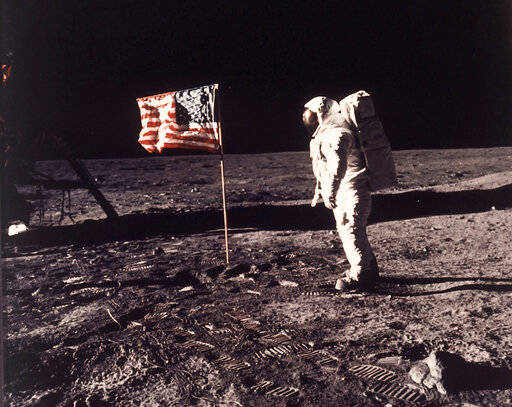COMMENTARY: A front-row seat to the Apollo 11 Moon shot
In a life sprinkled with incredible experiences that have included working at the Playboy Mansion as a member of Hugh Hefner’s staff, being part of Las Vegas’ first Arena Football League team — the Sting — and working in the world of Hollywood as a personal assistant to a number of celebrities, I’ve had some wonderful adventures. Synchronicity and serendipity have been my constant companions throughout my time on this planet.
But of all of the fortuitous blessings bestowed on me over several decades, the most profound was the opportunity to witness the launch of Apollo 11 less than four miles from launch pad 39A a half-century ago.
In July of 1969, I was a few months shy of my 14th birthday when my dad gave me some unexpected news. A friend-of-a friend worked at the Kennedy Space Center and generously invited me to visit him and his family in Florida the week of the first moon shot. Incredibly, I was going to drive with him the night before the launch and would be dropped off on a small stretch of beach that was set aside for friends and family of select NASA employees.
Growing up in Huntsville, Alabama, where Wernher von Braun and his team built and tested the Saturn V rocket at nearby Redstone Arsenal, I had spent a childhood feeling its rumble and power shake the world around us. It was hard for me to wrap my head around the fact that I was soon going to be a witness to its release from the bonds of Earth’s gravity as it blasted off into outer space. (In the next few years I would befriend Peter von Braun, Dr. von Braun’s son. It was a brief friendship but one that offered me the opportunity to meet his father who was one of my childhood heroes).
Shortly after passing through one of the guard gates that protected the facility, I was dropped off with meager provisions — an army cot, a flashlight, transistor radio and a brown paper bag that contained a baloney sandwich, an apple and a can of soda. The one item I did not have was a camera. However, the images I saw the night of July 15 and the morning of July 16 have been, and will be, forever frozen in my memory.
After I got settled, I stared across a body of water and took in the most incredible site I had ever — or would ever — see in my life. The Saturn V was the most powerful rocket ever built and it sat there before us bathed in a brilliant white shower of lights that amplified and reflected its incredible presence to the few dozen of us gathered on that unmarked beach. While we were not seated in the famous VIP viewing area that would soon be graced by former presidents, Hollywood royalty and other famous figures, we were the same distance away from history as they were.
Sleep did not come to me that night. Who could sleep in the moon shadows of the Saturn V? I anxiously awaited the passing of time as it slowly marched toward t-minus zero. I was easily the only solo teenager (and just barely in my teens, at that) in that select crowd during pre-launch. It was a different world back then.
At 9:32 a.m. Eastern Standard Time all five F1 engines of the first stage fired in a controlled explosion that lifted the Apollo 11 capsule into the heavens. It took several seconds for the sound to reach us, and when it did, it was like a million firecrackers going off.
All these years later, I am still in awe of all that transpired that week in July 1969. I will always be grateful to that NASA employee who invited an unknown stranger — a teenager — to stay with him and his family and allowed me to accompany him onto the grounds of the Kennedy Space Flight Center to be part of one of the most profound moments in human history.
Steve Wojciechowski writes from Las Vegas.

















